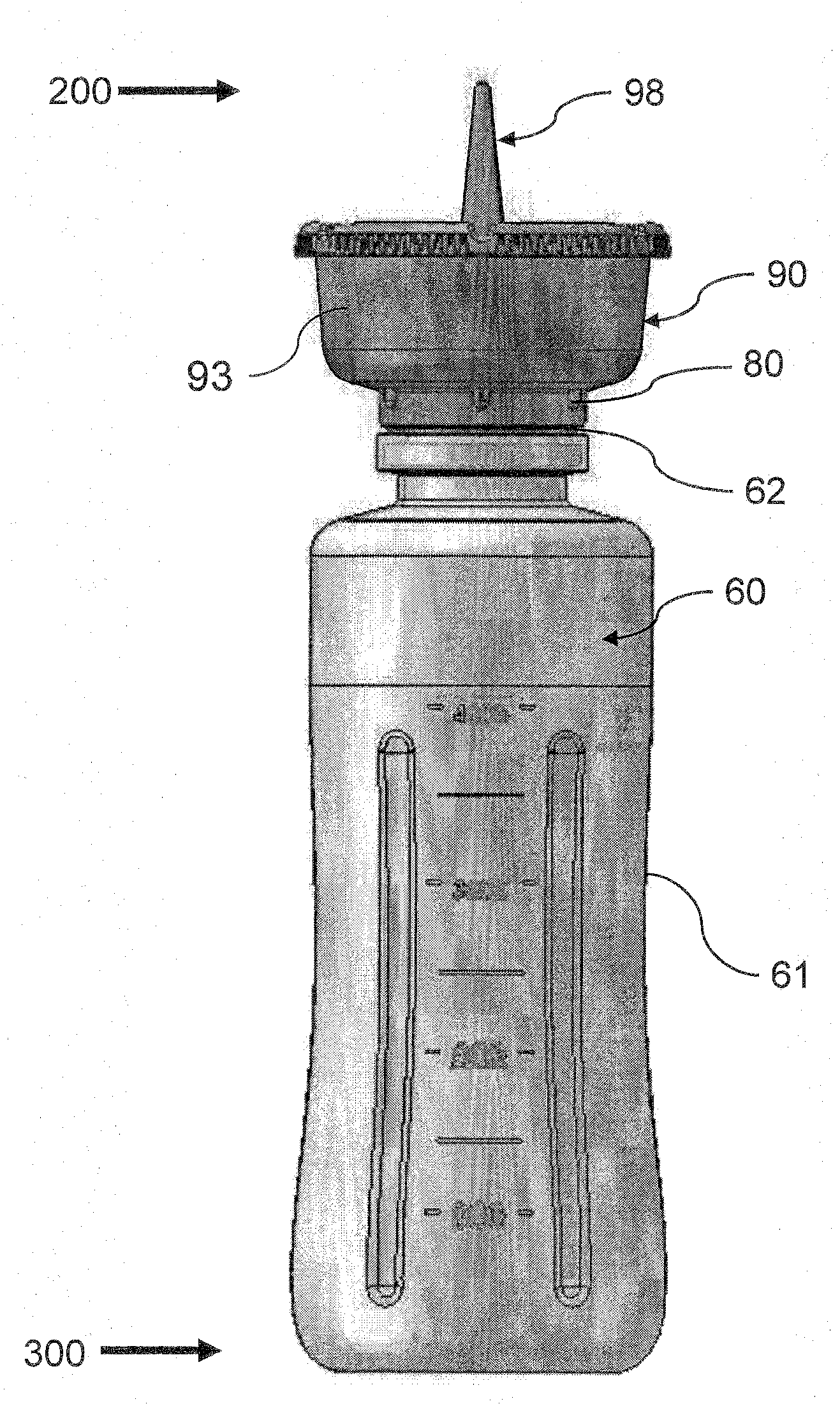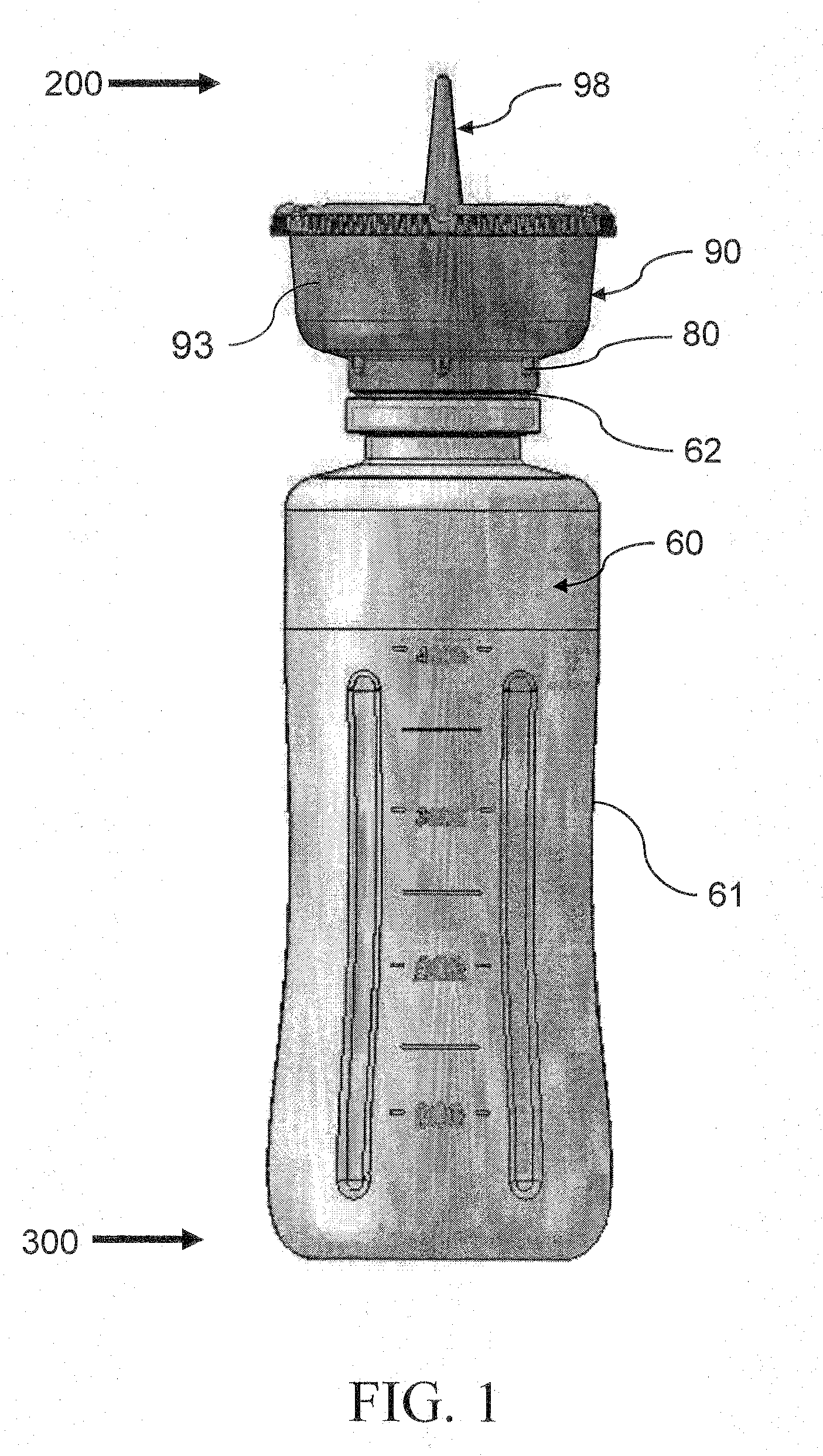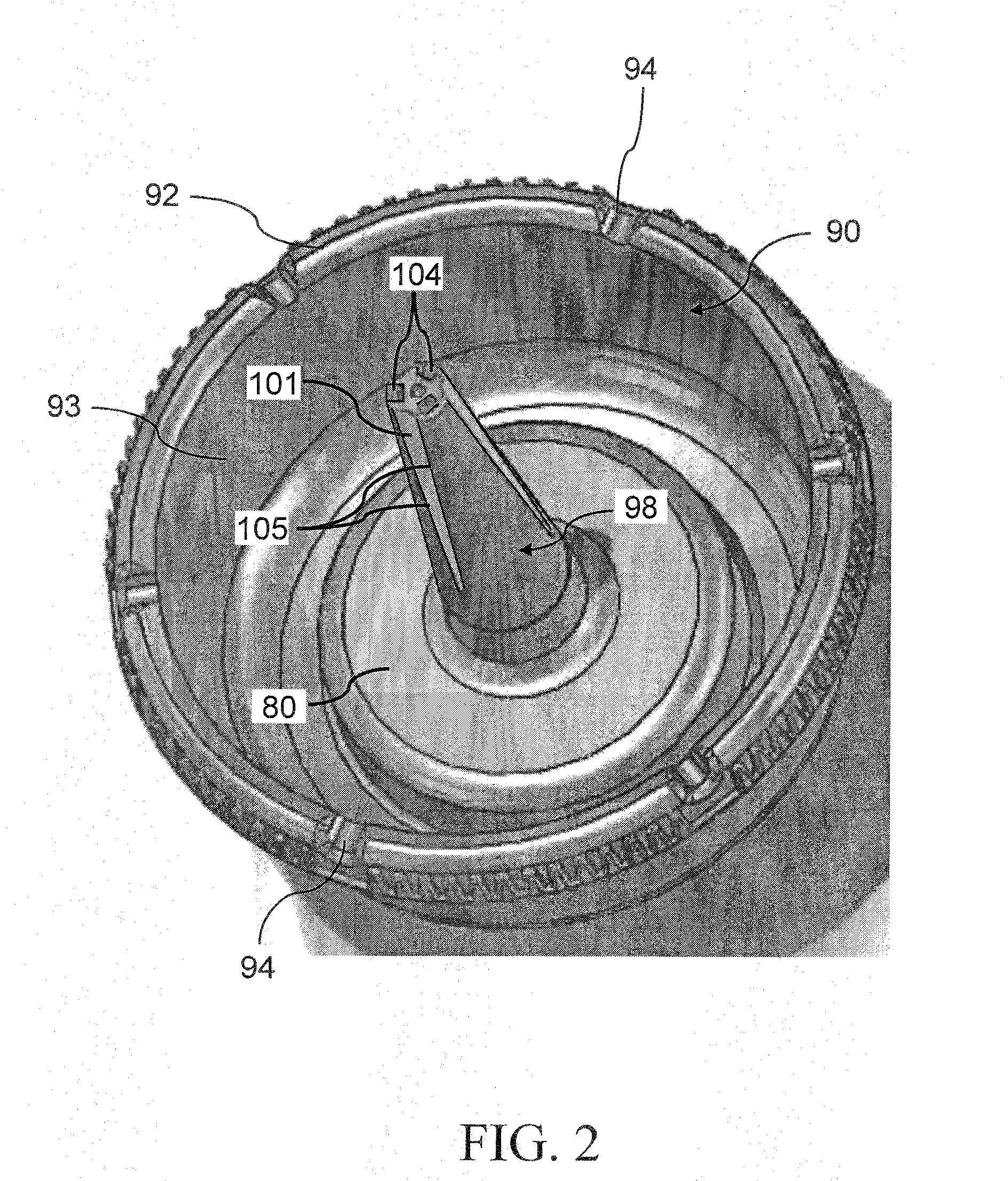Device and Method for Abscess Irrigation
- Summary
- Abstract
- Description
- Claims
- Application Information
AI Technical Summary
Benefits of technology
Problems solved by technology
Method used
Image
Examples
example 1
Method of Using Abscess Debridement and Cleansing Device
[0122]As with most medical procedures, universal precautions and barrier protection should be employed when irrigating wounds, including the use of gloves, gowns, facemask, and eye protection).
A. Abscess Incise and Drainage (I&D) Procedure
[0123]1. Prepare wound site by swabbing skin overlying the abscess with an antiseptic / skin cleanser, if not contraindicated.
[0124]2. Anesthetize the skin with a subcutaneous skin wheel using Lidocaine without epinephrine, if mot contraindicated. (See FIG. 11)
[0125]3. Use a scalpel (#11 blade) to make a linear incision into the abscess cavity at the point of maximal fluctuance. (See FIG. 12)
B. Culture and Manual Removal of Abscess Exudate
[0126]4. Culture the wound, if indicated. (This is usually recommended.)
[0127]5. Manually apply pressure to express any exudates within the abscess pocket and facilitate loculation disruption if present. (See FIG. 13)
[0128]6. If indicated, insert blunt instrume...
PUM
 Login to View More
Login to View More Abstract
Description
Claims
Application Information
 Login to View More
Login to View More - R&D
- Intellectual Property
- Life Sciences
- Materials
- Tech Scout
- Unparalleled Data Quality
- Higher Quality Content
- 60% Fewer Hallucinations
Browse by: Latest US Patents, China's latest patents, Technical Efficacy Thesaurus, Application Domain, Technology Topic, Popular Technical Reports.
© 2025 PatSnap. All rights reserved.Legal|Privacy policy|Modern Slavery Act Transparency Statement|Sitemap|About US| Contact US: help@patsnap.com



